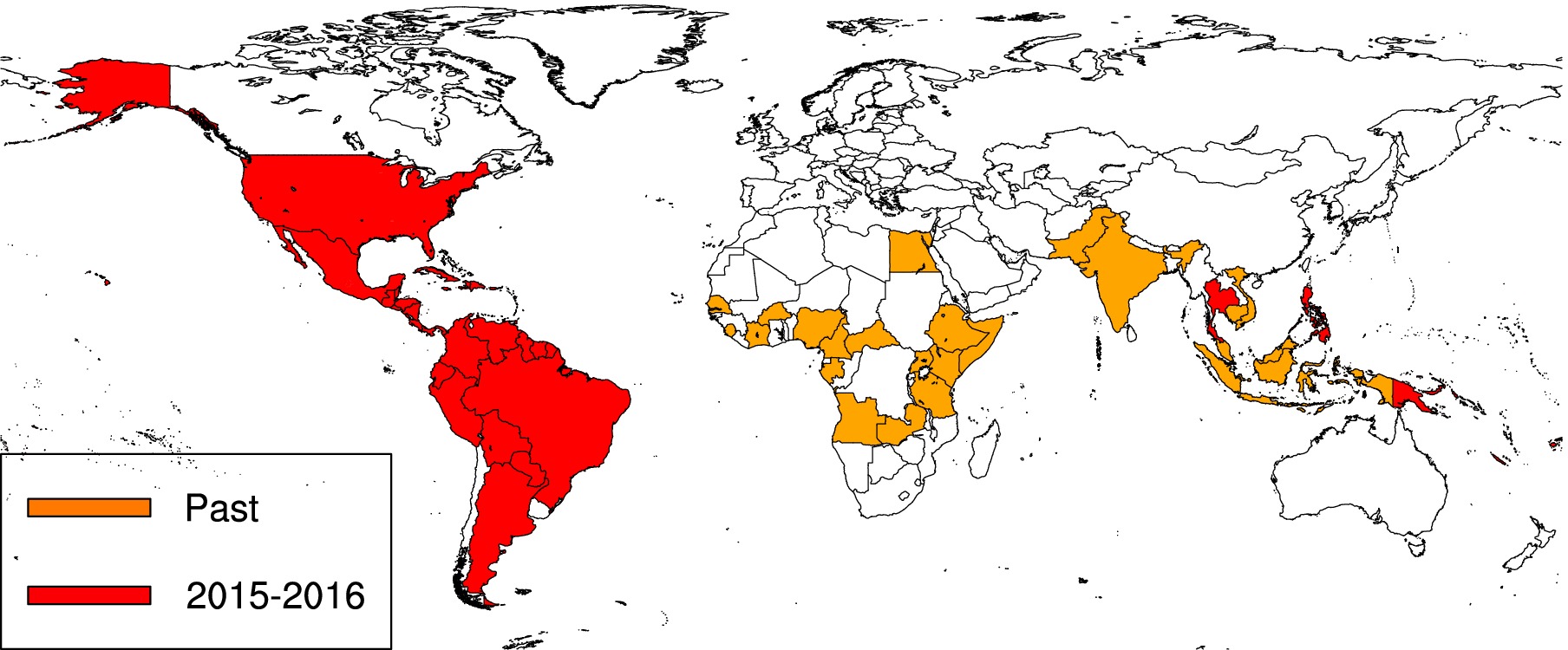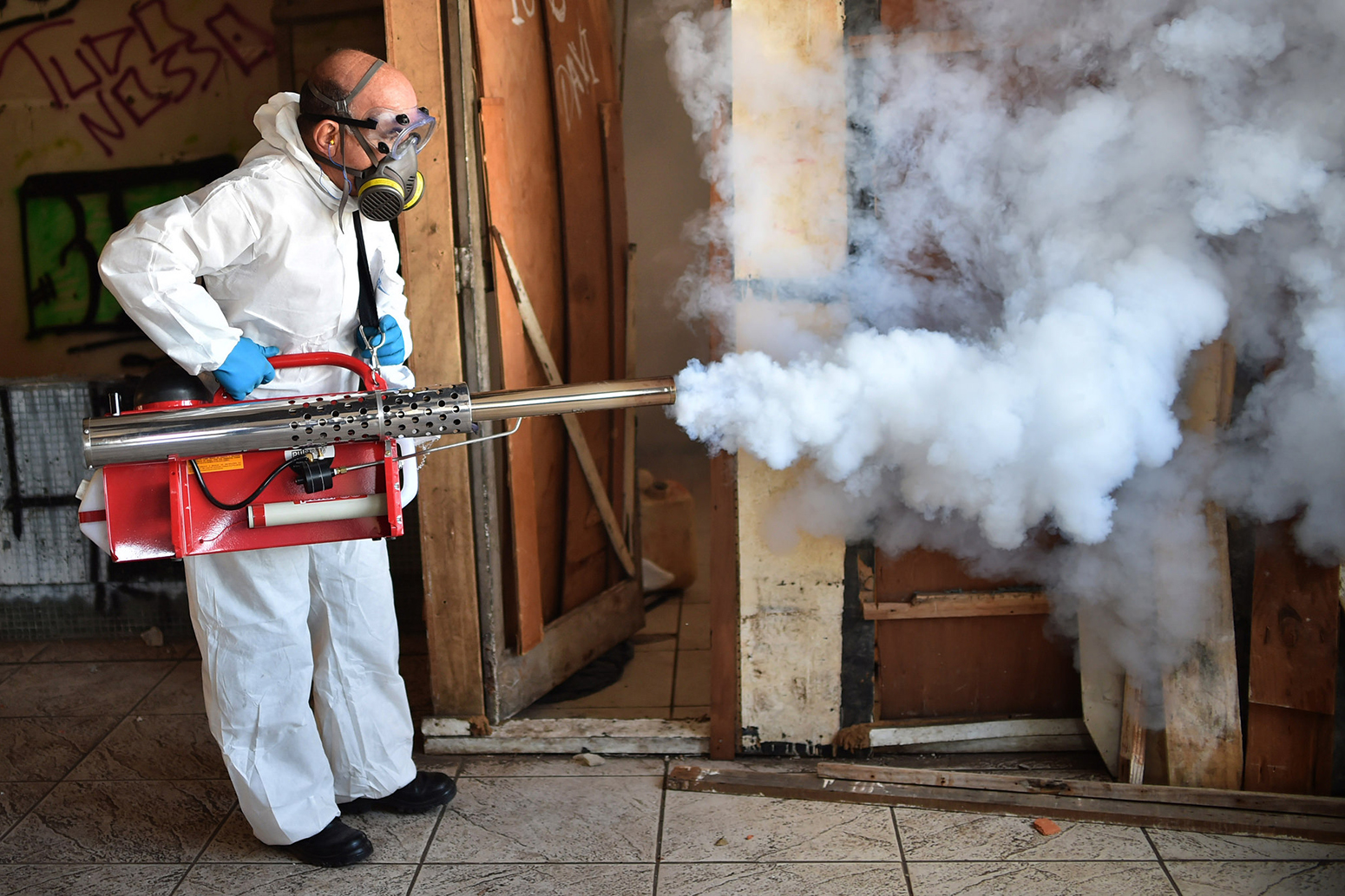Zika outbreak ‘fuelled by’ El Niño and climate change
Posted on 13 January 2017 by Guest Author
This is a re-post from Carbon Brief by Robert McSweeney
The combination of a strong El Niño event and human-caused climate change created optimal conditions for the recent outbreak of the Zika virus in South America, a new study says.
The spread of Zika during 2015-16 caused hundreds of thousands of infections, a surge in cases of birth defects linked to the disease, and saw athletes withdrawing from the Summer Olympics in Rio de Janeiro.
The warm conditions of 2015-16 were “exceptionally conducive” to mosquitoes spreading the disease across the continent, the researchers say, helped by the lack of natural immunity in the South American population.
And their results suggest there is a significant risk of summer outbreaks of Zika in the southeastern states of the US, southern China and southern Europe.
Public health emergency
First identified in Uganda in 1947, the Zika virus has gradually spread through the tropics – from Africa into southeast Asia and then across many small Pacific islands.
The main carrier of the disease is the Aedes aegypti mosquito, but other species such as Aedes albopictus and Aedes hensilli spread Zika as well.
Scientists estimate that the virus first entered South America through Brazil in late 2013, though the first infection wasn’t officially recorded until May 2015. In the months that followed, Zika spread throughout South and Central America and even into the US.
In February this year, the World Health Organisation declared the outbreak a Public Health Emergency of International Concern. The designation was lifted about a month ago, but Zika remains a “significant enduring public health challenge requiring intense action.”

Countries with recorded cases of the Zika virus for 2015-16 (red shading) and earlier (yellow). Source: Caminade et al. (2016)
The new study, published in the Proceedings of the National Academy of Sciences, finds that the outbreak was very likely fuelled by the unusually high temperatures of the last two years – a result of a very strong El Niño event on top of ongoing human-caused climate change.
El Niño is a weather phenomenon that originates in the Pacific Ocean, which tends to increase global temperature for a couple of years by releasing heat from the ocean to the atmosphere. The El Niño that developed in 2015 – and petered out in June 2016 – was one of the strongest on record.
Climate influence
An outbreak of Zika needs three main ingredients, says lead author Dr Cyril Caminade, a research associate in the Institute of Infection and Global Health at the University of Liverpool. He tells Carbon Brief:
“The minimum requirement for a vector-borne disease outbreak is the presence of competent mosquito vectors (Aedes mosquitoes), the presence of the pathogen (Zika is believed to have entered Brazil in 2013 but the World cup in 2014 must have helped too), and the presence of a suitable host (humans).”
There are then a series of factors that affect how far and how quickly an outbreak can spread. Some are socio-economic – such as poverty, access to sanitation, and the availability of healthcare and vaccines – but the climate ultimately “sets the background” to disease transmission, Caminade says.
The distribution of mosquitoes, how long they live, how often they bite, and the incubation period of the virus – i.e. how quickly mosquitoes become infectious after biting an infected person – all tend to increase in warm conditions, Caminade says. And heavy rainfall creates pools of water in which mosquitoes lay their eggs.

A pest-control worker from the Brazilian Department of Health fumigates a building in order to get rid of the mosquito Aedes aegypti, transmitter of the zika virus. Credit: Andre Borges/Agência Brasília.
The researchers built a mathematical model to simulate these climate-related factors. Using observed data for 1950-2015, they assessed how climate affects the spread of Zika by the Aedes aegypti and Aedes albopictus mosquitoes.
You can see their results in the map below. It shows how the risk of spread of Zika in 2015 compared to the average risk since 1950. The red shading indicates where conditions for a Zika outbreak were more suitable than usual in 2015.
For South America, the risk of Zika transmission was higher in 2015 than at any time during the 1950-2015 period, the paper notes.
In other words, the warm conditions during the 2015-16 El Nino event – in addition to the background warming from human-caused climate change – made South America ripe for an outbreak of Zika.

The risk of transmission of the Zika virus (“R0”) in 2015, as a percentage difference from average risk for 1950-2015. Red shading shows areas with higher than average risk in 2015, while blue indicates lower than average risk. Source: Caminade et al. (2016).
The model simulations show that the risk of Zika transmission was also high in tropical Africa and southeast Asia in 2015. But it’s likely that these regions didn’t experience similar outbreaks because of the natural immunity of their populations, says Caminade:
“The Zika virus has circulated in Africa since the 1950s and in Asia since the late 1960s and early 1970s. Thus the population has been exposed for a longer time period to the pathogen there.”
In contrast, the population of South America has only recently been exposed to Zika, which makes them “epidemiologically naïve” and therefore more susceptible to infections.
Transmission potential
Another finding from the paper is that the summer climates of southeastern states of the US, southern China and some of Mediterranean Europe are also warm enough for the Zika virus, says Prof Townsend Peterson, a specialist in ecology and evolutionary biology at the University of Kansas who wasn’t involved in the study. He tells Carbon Brief:
“Perhaps of particular interest from this study is the indication of considerable transmission potential for Zika virus pretty far north in North America.”
Confirming this finding will likely require further research, notes Peterson, as other studies have suggested that the habitat of Aedes aegypti mosquito doesn’t extend this far into North America.
That said, climate change has the potential to push vector-borne diseases like Zika into higher latitudes and altitudes, says Caminade. Though the scale of any outbreak will depend on other non-climate factors too, he adds.
In South America, for example, a large part of the population will have been exposed to Zika over the last two years. This means they are going to build up immunity to the virus, he says:
“Some studies estimate that cases could occur over the following three years – during the mosquito season roughly between December and March – then herd immunity will likely cause a delay of about 10 years before such a large epidemic occurs again there.”
Caminade, C. et al. (2016) Global risk model for vector-borne transmission of Zika virus reveals the role of El Niño 2015, Proceedings of the National Academy of Sciences, doi:10.1073/pnas.1614303114.































 Arguments
Arguments






























Comments